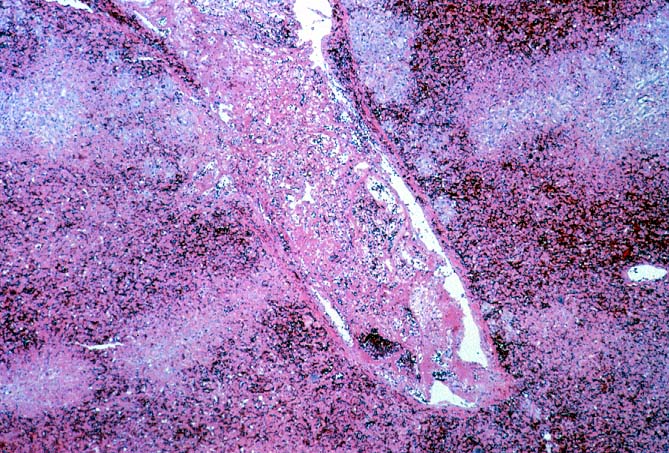 |
| Widespread hemorrhagic necrosis like that shown above, is characteristic of severe humoral rejection. However, this degree of damage is not commonly encountered unless the recipient receives recipient-compatible blood products that contain a large amount of anti-donor antibodies. This passively administered antibody can continue to fuel the humoral rejection reaction. For example, this O recipient of an A liver received 30 units of type O blood. It likely contained enough anti-A antibodies to make the reaction much worse than it might have otherwise been. |